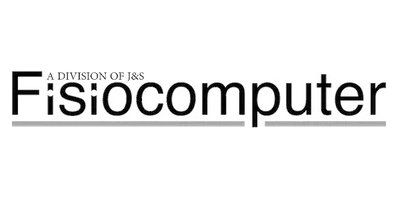

Fisiocomputer, Division of J&S srl
- Home
- Companies
- Fisiocomputer, Division of J&S srl
- Videos
- Fisiocomputer LTS-60 - Power Scanning ...
Fisiocomputer LTS-60 - Power Scanning Laser - Part 2 - The Software - Video
Find out more about the LTS-60 Power Scanning Laser produced by Fisiocomputer - J&S.
The Fisiocomputer LTS-60 - Power Scanning Laser is an electro-medical for physiotherapy for the treatment of the patient by laser beam, for exclusively therapeutic purposes.
It should be remembered that the LASER beam ('Light Amplification by Stimulated Emission of Radiation') is essentially a light beam, whose main characteristics reside in monochromaticity (as if to say that it is emitted a single light frequency, unlike the light we are accustomed to, which is always wide spectrum) and in the geometric consistency (that is, thanks to the previous characteristic, we can generate laser beams with very small opening angles, typically for medical applications in the order of one or two mRads).
From these two characteristics comes the fact that with a laser light you can easily obtain much higher power densities than with traditional light sources, and this fact, in addition to being exploited in various industrial fields, space and military, has been for several years also used in the medical field, even if with different application fields.
In fact, the so-called 'power-laser' (which mainly generates photo-evaporation and photo-chemical reactions: an example for everyone is the laser-scalpel) is distinguished from the 'mid-lasers' and 'soft-lasers' ( that have exclusively biostimulating effect).
The other versions, on the other hand, (from LTS-05 to LTS-20) since they use laser diodes whose emission falls into the infrared, require guide light (visible) that is implemented with the use of a laser diode that emits light red.
Since these versions have considerably higher work force powers ('mid-laser'), it should always be remembered that, even if the modes of action are similar to the less powerful version, at these powers the thermal effect is no longer completely negligible (especially if continuous emission is adopted with small deflections), for which special attention is required by the operator in the energy dosage (which depends on the combination of percentage of maximum power, pulse repetition frequency, scanning area of the beam).
The main reason for the adoption of major work powers is however (it should be remembered) the greater rapidity of the therapeutic action, and ultimately the abbreviation of treatment times.
The Fisiocomputer LTS-60 - Power Scanning Laser is an electro-medical for physiotherapy for the treatment of the patient by laser beam, for exclusively therapeutic purposes.
It should be remembered that the LASER beam ('Light Amplification by Stimulated Emission of Radiation') is essentially a light beam, whose main characteristics reside in monochromaticity (as if to say that it is emitted a single light frequency, unlike the light we are accustomed to, which is always wide spectrum) and in the geometric consistency (that is, thanks to the previous characteristic, we can generate laser beams with very small opening angles, typically for medical applications in the order of one or two mRads).
From these two characteristics comes the fact that with a laser light you can easily obtain much higher power densities than with traditional light sources, and this fact, in addition to being exploited in various industrial fields, space and military, has been for several years also used in the medical field, even if with different application fields.
In fact, the so-called 'power-laser' (which mainly generates photo-evaporation and photo-chemical reactions: an example for everyone is the laser-scalpel) is distinguished from the 'mid-lasers' and 'soft-lasers' ( that have exclusively biostimulating effect).
The other versions, on the other hand, (from LTS-05 to LTS-20) since they use laser diodes whose emission falls into the infrared, require guide light (visible) that is implemented with the use of a laser diode that emits light red.
Since these versions have considerably higher work force powers ('mid-laser'), it should always be remembered that, even if the modes of action are similar to the less powerful version, at these powers the thermal effect is no longer completely negligible (especially if continuous emission is adopted with small deflections), for which special attention is required by the operator in the energy dosage (which depends on the combination of percentage of maximum power, pulse repetition frequency, scanning area of the beam).
The main reason for the adoption of major work powers is however (it should be remembered) the greater rapidity of the therapeutic action, and ultimately the abbreviation of treatment times.
Most popular related searches






